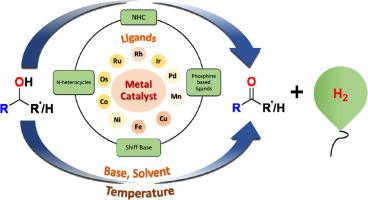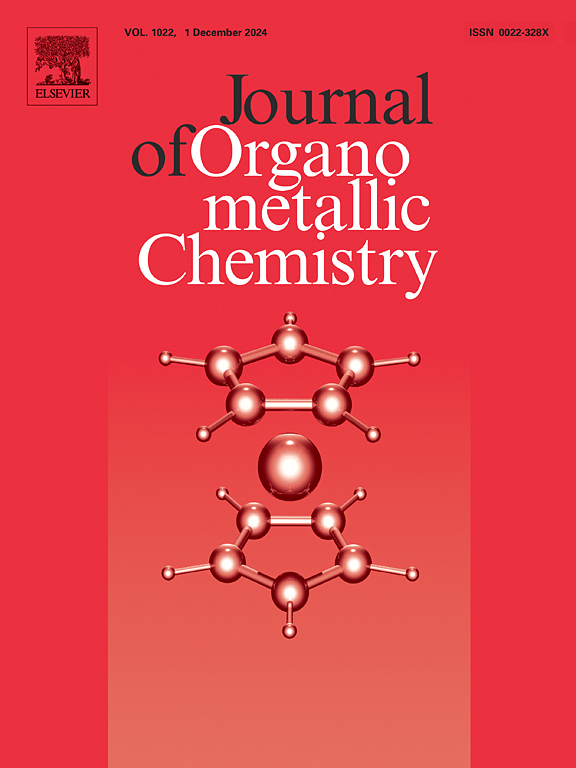将醇无受体脱氢为酮和醛的均相催化剂的最新进展
IF 2.1
3区 化学
Q3 CHEMISTRY, INORGANIC & NUCLEAR
引用次数: 0
摘要
无氧化剂氧化法,又称无受体脱氢法,已成为氧化醇类的一种强有力的策略。除了生成羰基化合物外,这种方法还能产生氢气--一种很有前途的绿色燃料,唯一的副产品就是水。从绿色和可持续化学的角度来看,这种方法无需使用有毒的化学计量氧化剂或氢受体,因而极具吸引力。因此,人们开发了几种基于过渡金属的催化方法,通过这种绿色方法合成酮和醛。在本综述中,我们将总结最近开发的均相催化剂,用于伯醇和仲醇的无受体脱氢反应,分别生成醛和酮。此外,我们还深入探讨了各种配体(包括双功能配体)在微调金属催化剂的立体电子特性方面所发挥的具体作用,以及它们对反应结果的影响。本文章由计算机程序翻译,如有差异,请以英文原文为准。

Recent advances in homogeneous catalysts for the acceptorless dehydrogenation of alcohols to ketones and aldehydes
Oxidant-free oxidation, also known as acceptorless dehydrogenation, has emerged as a powerful strategy for the oxidation of alcohols. Besides yielding carbonyl compounds, the method produces hydrogen gas- a promising green fuel with water as the only by-product. The elimination of toxic and stoichiometric oxidants or hydrogen acceptors makes this approach attractive from the standpoint of green and sustainable chemistry. Consequently, several transition metals-based catalytic methods have been developed to synthesise ketones and aldehydes through this green method. In this review, we would like to summarise the recent development of homogeneous catalysts for the acceptorless dehydrogenation of primary and secondary alcohols to yield aldehydes and ketones, respectively. Also, we delve into the specific roles played by various ligands, including bi-functional ligands, in fine-tuning the stereo-electronic properties of the metal catalyst and delineate their impact on reaction outcomes.
求助全文
通过发布文献求助,成功后即可免费获取论文全文。
去求助
来源期刊

Journal of Organometallic Chemistry
化学-无机化学与核化学
CiteScore
4.40
自引率
8.70%
发文量
221
审稿时长
36 days
期刊介绍:
The Journal of Organometallic Chemistry targets original papers dealing with theoretical aspects, structural chemistry, synthesis, physical and chemical properties (including reaction mechanisms), and practical applications of organometallic compounds.
Organometallic compounds are defined as compounds that contain metal - carbon bonds. The term metal includes all alkali and alkaline earth metals, all transition metals and the lanthanides and actinides in the Periodic Table. Metalloids including the elements in Group 13 and the heavier members of the Groups 14 - 16 are also included. The term chemistry includes syntheses, characterizations and reaction chemistry of all such compounds. Research reports based on use of organometallic complexes in bioorganometallic chemistry, medicine, material sciences, homogeneous catalysis and energy conversion are also welcome.
The scope of the journal has been enlarged to encompass important research on organometallic complexes in bioorganometallic chemistry and material sciences, and of heavier main group elements in organometallic chemistry. The journal also publishes review articles, short communications and notes.
 求助内容:
求助内容: 应助结果提醒方式:
应助结果提醒方式:


